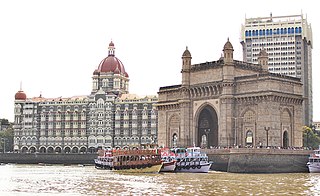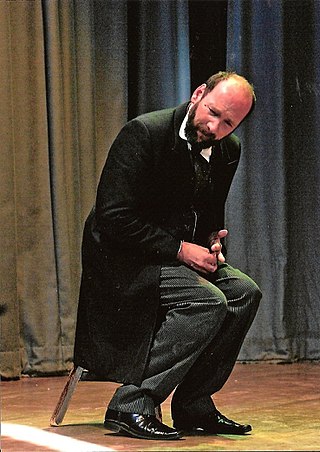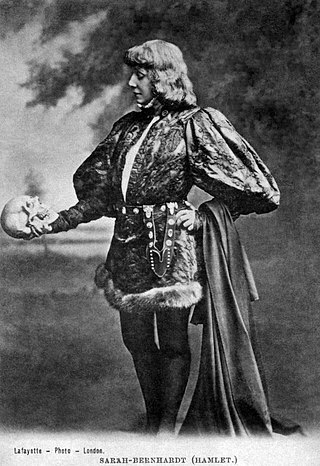Theatre festivals
SCENE Festival 2023 Cameroon
Theatre festivals are amongst the earliest types of festival. Classical Greek theatre was associated with religious festivals dedicated to Dionysus, called the City Dionysia. The medieval mystery plays were presented at the major Christian feasts. Theatre as an everyday part of life is a comparatively recent phenomenon.
In recent years, theatre festivals have been established to promote various types of theatre, such as the works of William Shakespeare and George Bernard Shaw. Many festivals, such as those in the fringe theatre movement, promote the work of beginning playwrights (called "new writing") and performers.
This is a list of theatre festivals around the world:
SCENE Festival 2023 Cameroon
In common with other European countries, the most frequent and most popular form of theatre in Poland is dramatic theatre, based on the existence of stable artistic companies. It is above all a theatre of directors, who decide on the form of its productions and the appearance of individual scenes. There is no strict division in Poland between theatre and film directors and actors, therefore many stage artists are known to theatre goers from films of Andrzej Wajda, for example: Wojciech Pszoniak, Daniel Olbrychski, Krystyna Janda, Jerzy Radziwiłowicz, and from films of Krzysztof Kieślowski, actors such as Jerzy Stuhr, Janusz Gajos and others.

A repertory theatre, also called repertory, rep, true rep or stock, which are also called producing theatres, is a theatre in which a resident company presents works from a specified repertoire, usually in alternation or rotation.

Japanese traditional dance describes a number of Japanese dance styles with a long history and prescribed method of performance. Some of the oldest forms of traditional Japanese dance may be among those transmitted through the kagura tradition, or folk dances relating to food producing activities such as planting rice and fishing, including rain dances. There are large number of these traditional dances, which are often subfixed -odori, -asobi, and -mai, and may be specific to a region or village. Mai and odori are the two main groups of Japanese dances, and the term buyō (舞踊) was coined in modern times as a general term for dance, by combining mai (舞) and odori (踊).

Puppetry is a form of theatre or performance that involves the manipulation of puppets – inanimate objects, often resembling some type of human or animal figure, that are animated or manipulated by a human called a puppeteer. Such a performance is also known as a puppet production. The script for a puppet production is called a puppet play. Puppeteers use movements from hands and arms to control devices such as rods or strings to move the body, head, limbs, and in some cases the mouth and eyes of the puppet. The puppeteer sometimes speaks in the voice of the character of the puppet, while at other times they perform to a recorded soundtrack.

A black box theater is a simple performance space, typically a square room with black walls and a flat floor. The simplicity of the space allows it to be used to create a variety of configurations of stage and audience interaction. The black box is a relatively recent innovation in theatre.

Cultural tourism is a type of tourism in which the visitor's essential motivation is to learn, discover, experience and consume the cultural attractions and products offered by a tourist destination. These attractions and products relate to the intellectual, spiritual, and emotional features of a society that encompasses arts and architecture, historical and cultural heritage, culinary heritage, literature, music, creative industries as well as the living cultures with their lifestyles, value systems, beliefs and traditions.

The Edinburgh Festival Fringe is the world's largest performance arts festival, which in 2019 spanned 25 days and featured more than 59,600 performances of 3,841 different shows in 322 venues. Established in 1947 as an alternative to the Edinburgh International Festival, it takes place in Edinburgh every August. The Edinburgh Festival Fringe has become a world-leading celebration of arts and culture, surpassed only by the Olympics and the World Cup in terms of global ticketed events. As an event it "has done more to place Edinburgh in the forefront of world cities than anything else" according to historian and former chairman of the board, Michael Dale.

Cantonese opera is one of the major categories in Chinese opera, originating in southern China's Guangdong Province. It is popular in Guangdong, Guangxi, Hong Kong, Macau and among Chinese communities in Southeast Asia. Like all versions of Chinese opera, it is a traditional Chinese art form, involving music, singing, martial arts, acrobatics, and acting.
The League of Resident Theatres (LORT) is the largest professional theater association of its kind in the United States, with 75 member theaters located in every major market in the U.S., including 29 states and the District of Columbia. LORT members collectively issue more Equity contracts to actors than Broadway and commercial tours combined.

A revue is a type of multi-act popular theatrical entertainment that combines music, dance, and sketches. The revue has its roots in 19th century popular entertainment and melodrama but grew into a substantial cultural presence of its own during its golden years from 1916 to 1932. Though most famous for their visual spectacle, revues frequently satirized contemporary figures, news or literature. Similar to the related subforms of operetta and musical theatre, the revue art form brings together music, dance and sketches to create a compelling show. In contrast to these, however, revue does not have an overarching storyline. Rather, a general theme serves as the motto for a loosely related series of acts that alternate between solo performances and dance ensembles.

Street theatre is a form of theatrical performance and presentation in outdoor public spaces without a specific paying audience. These spaces can be anywhere, including shopping centres, car parks, recreational reserves, college or university campus and street corners. They are especially seen in outdoor spaces where there are large numbers of people. The actors who perform street theatre range from buskers to organised theatre companies or groups that want to experiment with performance spaces, or to promote their mainstream work. It was a source of providing information to people when there were no sources of providing information like television, radio etc. Nowadays, street play is used to convey a message to the crowd watching it. Street play is considered to be the rawest form of acting, because one does not have a microphone or loud speakers.

A resident of Mumbai is called a Mumbaikar. People prefer to stay close to a railway station for easy access to the metropolis. Many city-dwellers lead a fast-paced life with very little time for other activities owing to a significant amount of time spent on daily commuting.

A theater, or playhouse, is a structure where theatrical works, performing arts, and musical concerts are presented. The theater building serves to define the performance and audience spaces. The facility usually is organized to provide support areas for performers, the technical crew and the audience members, as well as the stage where the performance takes place.

The culture of Cornwall forms part of the culture of the United Kingdom, but has distinct customs, traditions and peculiarities. Cornwall has many strong local traditions. After many years of decline, Cornish culture has undergone a strong revival, and many groups exist to promote Cornwall's culture and language today.

A solo performance, sometimes referred to as a one-man show, one-woman show, or one-person show, features a single person telling a story for an audience, typically for the purpose of entertainment. This type of performance comes in many varieties, including autobiographical creations, comedy acts, novel adaptations, vaudeville, poetry, music and dance. In 1996, Rob Becker's Defending the Caveman became the longest-running one-person play in the history of Broadway theatre.
Dance in Singapore has been an integral part of its culture despite having a relatively short history of creative, artistic and professional dance. The range of dance reflects the cultural diversity of Singapore, from traditional dance forms to contemporary genres.

The Festival Internacional Cervantino (FIC), popularly known as El Cervantino, is a festival which takes place each fall in the city of Guanajuato, located in central Mexico. The festival originates from the mid 20th century, when short plays by Miguel de Cervantes called entremeses were performed in the city's plazas. Guanajuato is a small colonial-era city with a rich cultural history..

Theatre or theater is a collaborative form of performing art that uses live performers, usually actors or actresses, to present the experience of a real or imagined event before a live audience in a specific place, often a stage. The performers may communicate this experience to the audience through combinations of gesture, speech, song, music, and dance. It is the oldest form of drama, though live theatre has now been joined by modern recorded forms. Elements of art, such as painted scenery and stagecraft such as lighting are used to enhance the physicality, presence and immediacy of the experience. Places, normally buildings, where performances regularly take place are also called "theatres", as derived from the Ancient Greek θέατρον, itself from θεάομαι.

The Internationale Maifestspiele Wiesbaden is a theater festival in Wiesbaden, Germany. Established in the late 19th century after the Bayreuth Festival, the festival is one of the most distinguished international theatre and music festivals in the world. It is presented annually in May at the Hessisches Staatstheater Wiesbaden, the State Theatre of Hesse in the capital Wiesbaden. The festival currently features performances of operas, ballets, plays and musicals. Visiting companies, mostly from European theaters, present their recent productions along with performances of the Theater Wiesbaden. Concerts from a wide array of music genres are featured as well as artistic circus acts and modern dance presentations. Lectures, recitals, cabaret performances, art showings and readings are also part of the program.
Assembly is a theatre and comedy promotion company, producer and venue operator. It programmes and promotes entertainment events at venues in Edinburgh, London and Brighton, and is the longest-established of the so-called Big Four promoters at the Edinburgh Festival Fringe in August. Year-round audience numbers at Assembly events are more than 500,000, and the company's artistic director is William Burdett-Coutts.